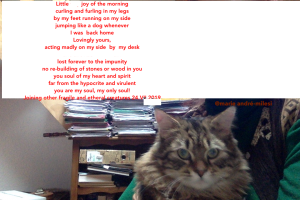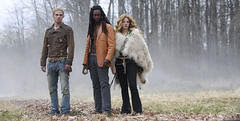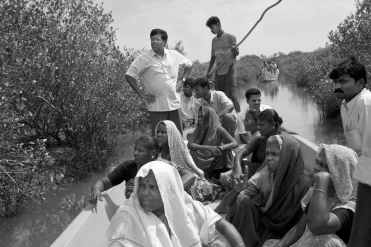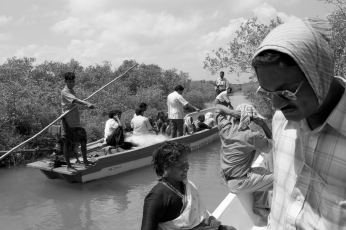Home » headlines and hear the news (Page 3)
Category Archives: headlines and hear the news
Cambrigdeshire boy and school uniform -under construction
http://www.bbc.co.uk/news/uk-england-beds-bucks-herts-13362700#
1)Match the words :
to tease courage
equal determination
Impington School independance
to be mocked at equality
to bully someone the act of making fun of: se moquer gentiment de
independant a school in Cambridgshire: which intends to develop children’s skills: independance
determined to be involved in a strong physical aggression against someone
brave or courageous to be made fun of
subduction earthquake in Japan ?? tsunami [???] – under construction 11th March 2011 piece of news
Two survivors found in quake-hit Japan city Ishinomaki
 The pair survived on yoghurt and other food from the refrigerator
The pair survived on yoghurt and other food from the refrigeratorAn 80-year-old woman and a 16-year-old boy have been plucked from the rubble of a house demolished by the enormous quake which hit Japan nine days ago.
Sumi Abe and Jin Abe – said to be her grandson – “were found under debris”, said a police spokesman in Ishinomaki city, Miyagi prefecture, according to AFP news agency.
The two were in the kitchen when the quake hit on 11 March, a doctor said.
They survived as they were able to get yoghurt and other food from the fridge.
The grandson eventually managed to reach the roof of the house where he flagged down a rescue helicopter, reported Japan’s NHK news service.
The two are now being treated in hospital in Ishinomaki.
“Their temperatures were quite low but they were conscious,” the police spokesman said.
He said details of their condition were not immediately available, though a rescuer was quoted as saying the boy was found shivering and with no feeling in one leg.
Miyagi was the worst-hit in the double disaster of the quake and tsunami of 11 March, with police now saying they fear 15,000 lives could have been lost in that prefecture alone.
On Saturday the military announced a man had been found alive in rubble, but it later turned out that he had been in an evacuation centre and had tried to return to his home.
http://www.guardian.co.uk/world/video/2011/mar/20/japan-survivors-found-after-nine-days
Une forêt pour se protéger des tsunamis
Environnement
«Nous avons protégé la forêt et elle nous a protégés.» Des villageois pauvres du sud de l’Inde racontent comment un projet de conservation de la nature les a sauvés du tsunami et sortis de l’extrême pauvreté.
Patrick Alleyn (texte et photos), Dossier Environnement, International
Tamil Nadu, Inde — Nous traversons en chaloupe l’immense forêt marécageuse de Pichavaram, dans le sud de l’Inde. On s’y faufile à travers des canaux, guidés par Nagamuthu, un jeune membre de la tribu Irula. Pichavaram est une mangrove, c’est-à-dire une forêt d’arbres poussant dans l’eau salée et la boue, au bord d’un océan tropical. Dressés, tels des araignées, sur leurs dizaines de racines crochues leur servant de tronc, ils valsent au gré de la houle, réduisant ainsi jusqu’à 90% de l’énergie des vagues. Dans les régions tropicales soumises aux cyclones et ouragans, la nature a heureusement créé cet efficace système de défense des rives.
«Le jour du tsunami, les habitants des villages de Pichavaram ont aperçu trois vagues gigantesques au-dessus de la mangrove, raconte Nagamuthu. Ils ont eu le temps de s’enfuir, car les arbres ont ralenti la violence des vagues. La marée géante a emporté les bateaux, mais sans détruire les maisons. «Un village voisin, situé à la même distance de la mer, mais non protégé par la forêt, a, lui, été dévasté», fait remarquer le pêcheur qui dirige notre barque.
Le tsunami du 26 décembre 2004 a été l’une des pires catastrophes naturelles de l’histoire. L’immense raz-de-marée, provoqué par un tremblement de terre dans l’océan, a fait 280 000 morts dans plusieurs pays d’Asie. «Mais à Pichavaram, nous avons protégé la forêt et elle nous a protégés», conclut Nagamuthu, non sans fierté. Et non sans raison.
Gardiens de la forêt
 Nagamuthu coordonne depuis 1996 un vaste projet de sauvetage des arbres de la mangrove de Pichavaram. Il était à peine âgé de 17 ans quand des biologistes marins de la Fondation Swaminathan, un organisme scientifique indien, ont débarqué dans son village à la recherche d’un meneur. Ils voulaient mobiliser les villageois pour enrayer la dégradation de la forêt après les coupes «sélectives» d’arbres, autorisées par le gouvernement dans les années 1970.
Nagamuthu coordonne depuis 1996 un vaste projet de sauvetage des arbres de la mangrove de Pichavaram. Il était à peine âgé de 17 ans quand des biologistes marins de la Fondation Swaminathan, un organisme scientifique indien, ont débarqué dans son village à la recherche d’un meneur. Ils voulaient mobiliser les villageois pour enrayer la dégradation de la forêt après les coupes «sélectives» d’arbres, autorisées par le gouvernement dans les années 1970.
«Nagamuthu était le seul habitant du village sachant lire et écrire. Nous voulions transformer les habitants pauvres de la région en gardiens de la forêt, en leur démontrant que son reboisement allait améliorer leurs revenus», expose Selvam, le directeur de ce projet à la Fondation Swaminathan.
«Les gens ici sont très pauvres. Pour combler leurs besoins de base, ils coupaient les arbres ou faisaient brouter sans contrôle leurs animaux autour de la mangrove, des pratiques néfastes pour son écosystème», poursuit Selvam. Avec un financement de l’Agence canadienne de développement international (ACDI) et du Centre de recherche en développement international (CRDI), deux organismes du gouvernement canadien, les scientifiques indiens ont démarré le chantier environnemental à Pichavaram.
Les villageois ont planté des arbres et, pour les alimenter d’eau fraîche, creusé des canaux. «Des pans entiers de la mangrove ont repris vie. Sous les arbres, les crevettes, les crabes et les poissons se sont multipliés. La pêche est devenue abondante», se rappelle le père de Nagamuthu.
Pour protéger l’environnement, les scientifiques croyaient qu’il fallait d’abord combattre la pauvreté dans ces villages isolés. Ainsi, les villageois cesseraient les activités nuisibles pour la forêt, mais aussi se mobiliseraient contre tout projet du gouvernement ou de riches investisseurs pouvant la menacer.
La Fondation a donc construit une école. «On s’est aussi battu devant les tribunaux pour faire reconnaître aux membres de la tribu Irula leurs droits comme population indigène discriminée en Inde. Ainsi, des places devaient leur être réservées dans les collèges», rapporte le biologiste.
Et le jeune Nagamuthu d’enchaîner: «Aujourd’hui, les gens de mon village conseillent le ministère des Forêts, et nous avons reçu le mandat de patrouiller la mangrove pour dénoncer toute coupe illégale.»
Le modèle de Pichavaram — gestion de l’environnement par les communautés pauvres elles-mêmes — a ensuite été reproduit pour la protection d’autres mangroves en Inde. C’est aussi un modèle promu de plus en plus dans le monde, en particulier par les Nations unies, pour protéger les écosystèmes en péril — forêts, rivières, terres agricoles… Car, les pauvres sont toujours les premières victimes de la destruction de l’environnement.
«Quand j’étais enfant, les hommes du village ne portaient que des caleçons qu’ils achetaient usagés au marché!», se souvient Nagamuthu. À 8 ans, je devais conduire les chèvres au champ. Je voyais les enfants d’autres villages se rendre à l’école. De moi-même, j’ai décidé de m’y inscrire. Mais, à 13 ans, j’ai dû retourner dans la mangrove pour pêcher. Sans filet ni bateau, j’étais expert pour attraper les crabes à mains nues!» rigole-t-il. Nagamuthu poursuit maintenant des études par correspondance en sociologie.
Destruction d’une protection naturelle
L’impact du tsunami de 2004 aurait été bien moindre si les humains n’avaient pas détruit les mangroves, estiment les spécialistes du Programme des Nations unies pour l’environnement (PNUE).
En effet, plus du tiers de ces écosystèmes côtiers a disparu depuis 20 ans, pour céder la place à des hôtels, des routes ou des bassins d’élevage de crevettes. Souvent dans ces «fermes» à crevettes, les riches investisseurs abandonnent les installations après quelques années à peine, une fois la terre contaminée. Jetés au chômage, les habitants pauvres se retrouvent sans aucune ressource dans un champ de boue et de sel.
Le soir tombe. Nagamuthu nous presse de rentrer, car les filets des petits pêcheurs se dresseront bientôt sur le parcours de notre barque. «Le tsunami a créé auprès des gouvernements un intérêt nouveau pour les mangroves, constate le scientifique Selvam. Mais, je crains que cet intérêt ne s’estompe à mesure que le tsunami s’effacera des mémoires.»
http://www.lemonde.fr/week-end/portfolio/2011/03/18/tsunami-des-images-pour-le-japon_1494543_1477893.html
http://www.bbc.co.uk/news/world-asia-pacific-12743417
Radiation fears after Japan blast
By Richard Warry BBC News
The Japanese authorities say radiation levels from the Fukushima Daiichi nuclear plant have started to climb to potentially harmful levels.
Residents living within 30km (18 miles) of the plant have been advised to leave the area, or to stay indoors, and try to make their homes airtight.
Experts have stressed that swift action should be able to minimise any impact on human health.
What are the immediate health effects of exposure to radiation?
Exposure to moderate levels of radiation – above one gray – can result in radiation sickness, which produces a range of symptoms.
Nausea and vomiting often begin within hours of exposure, followed by diarrhoea, headaches and fever.
After the first round of symptoms, there may be a brief period with no apparent illness, but this may be followed within weeks by new, more serious symptoms.
At higher levels of radiation, all of these symptoms may be immediately apparent, along with widespread – and potentially fatal – damage to internal organs.
Exposure to a radiation dose of four gray will typically kill about half of all healthy adults.
For comparison, radiation therapy for cancer typically involves several doses of between one and seven gray at a time – but these doses are highly controlled, and usually specifically targeted at small areas of the body.
| Radiation dose | |
|---|---|
| Source: World Nuclear Association | |
| 2 mSv/yr (millisieverts per year) | Typical background radiation experienced by everyone (average 1.5 mSv in Australia, 3 mSv in North America) |
| 9 mSv/yr | Exposure by airline crew flying New York-Tokyo polar route |
| 20 mSv/yr | Current limit (averaged) for nuclear industry employees |
| 50 mSv/yr | Former routine limit for nuclear industry employees. It is also the dose rate which arises from natural background levels in several places in Iran, India and Europe |
| 100 mSv/yr | Lowest level at which any increase in cancer is clearly evident. |
| 350 mSv/lifetime | Criterion for relocating people after Chernobyl accident |
| 1,000 mSv single dose | Causes (temporary) radiation sickness such as nausea and decreased white blood cell count, but not death. Above this, severity of illness increases with dose |
| 5,000 mSv single dose | Would kill about half those receiving it within a month |
How is radiation sickness treated?
The first thing to do is to try to minimise further contamination by removing clothes and shoes, and gently washing the skin with soap and water.
Drugs are available that increase white blood-cell production to counter any damage that may have occurred to the bone marrow, and to reduce the risk of further infections due to immune-system damage.
There are also specific drugs that can help to reduce the damage to internal organs caused by radioactive particles.
How does radiation have an impact on health?
Radiation and cancer
- Most experts agree even small doses of ionising radiation – as low as 100 millisieverts – can increase the risk of cancer, but by a very small amount.
- In general, the risk of cancer increases as the dose of radiation increases. Exposure to one sievert of radiation is estimated to increase the lifetime risk of fatal cancer by around 5%.
- The thyroid gland and bone marrow are particularly sensitive to ionising radiation.
- Leukemia, a type of cancer that arises in the bone marrow, is the most common radiation-induced cancer. Leukemias may appear as early as a few years after radiation exposure.
- Other cancer can also result from exposure to radiation, but may not develop for at least a decade. These include cancers of the lung, skin, thyroid, breast and stomach.
What are the most likely long-term health effects?
Cancer is the biggest long-term risk.
[…]
[…]
The biggest risk was that radioactive iodine could get into their system, raising the risk of thyroid cancer.
To counter that risk, people – in particular children – could be given tablets containing stable iodine which would prevent the body absorbing the radioactive version.
The Japanese already have a lot of iodine in their natural diet, so that should help too.
How does Fukushima compare to Chernobyl?
Professor Gerry Thomas, who has studied the aftermath of the Chernobyl disaster, said: “It is very unlikely that this will turn into anything that resembles Chernobyl.
“In Chernobyl you had a steam explosion which exposed the reactor core, which meant you had a lot of radiation shooting up into the atmosphere.”
Prof Thomas said although the Chernobyl disaster had led to a rise in thyroid cancer cases, the only people affected were those living in the immediate area of the explosion and who were young at the time.
A2 -B1 irregular verbs -Clothes with Dusty The Cat
https://agendaweb.org/exercises/vocabulary/clothes/clothes1
https://agendaweb.org/exercises/vocabulary/clothes/clothes2

http://www.franglish.fr/diapoverb/
[youtube]http://www.youtube.com/watch?v=fDX7tevXO1E[/youtube]
A-What is Dusty ‘s favourite activity? Why?
Dusty likes + base verbale + ing
B- Which clothes?
1° Favourite clothes:
2° Least favourite clothes:
3° How many clothes did she steal?
4°- When does she steal clothes?
in the morning – at night – when the sun sets



















































